Free digital copy
Get Speciality Food magazine delivered to your inbox FREE
Get your free copy
The word ‘deli’ is an evocative one. For the epicurean, it conjures images of shelves bursting with jars of plump artisan olives, small batch relishes and spice pastes, neatly arranged boxes of chicly packaged chocolates, and gleaming glass counters where big fat wedges of farmhouse cheese nestle alongside cured meats, dips and other delicacies.
There have been incredible leaps in the fine food industry over the last 20 years, with boundless innovation coming through from producers. But the backbone of any good deli, surely, is its curation of timeless classics – and for many, this points to one specific place – Italy.
Britain’s oldest delicatessens have Italian roots, from London’s Terroni, to Edinburgh’s Valvona & Crolla. To this day, these classic delis offer endless inspiration to customers. But, as Speciality Food discovers, far from standing still and resting on their laurels, they are continuously changing with the world around them.
He may be biased, but Antonio Picciuto of Buongiorno Italia thinks Italian food and drink is still some of the best around. “It’s so versatile,” he says. “And there’s so much variety. You can create anything with Italian ingredients. Also, it’s accessible. I always say, you can come into my deli and create a whole dinner party. That’s what sets us apart, and that’s what is so important.”
Bruno Zoccola of Valentina Delis agrees, saying Italian cuisine is, “The most popular in the whole world. People know it and understand it. They love the variety of options within Italian food, and the focus on healthy ingredients.”
Italian delis, Bruno adds, fill the void left by supermarkets, where the Italian offering is limited by space and mass appeal. He likes to follow a ‘good, better, best’ policy in store in order to have options for a variety of budgets, and encourages other delis (regardless of whether they are Italian or not) to follow this mantra when looking to stock produce from the country. By doing this, “delis can provide the quality and variety that really excites people and showcases the vast range that Italian food can incorporate.”
“I always say to my staff that our food has to be better than the supermarkets,” says Antonio. “It must be better quality. If you supply normal standard Italian food, your deli is never, I think, going to be that successful. You need to have that edge. The salami has to be better. The Parma ham presented better. The olives far superior. If we choose exceptional products, I believe our customers will taste the difference – and they often tell me that’s the case.”
Bruno believes having Italian owners and staff gives delis an edge too. “Their expertise, insight and recommendations can add so much to a customer’s shopping experience (and can encourage them to add more to their basket).
“Italians are so friendly, and proud of their country and cuisine, that they are keen to share advice and suggestions where they can, helping to recreate the local, intimate feel of traditional Italian delis.”
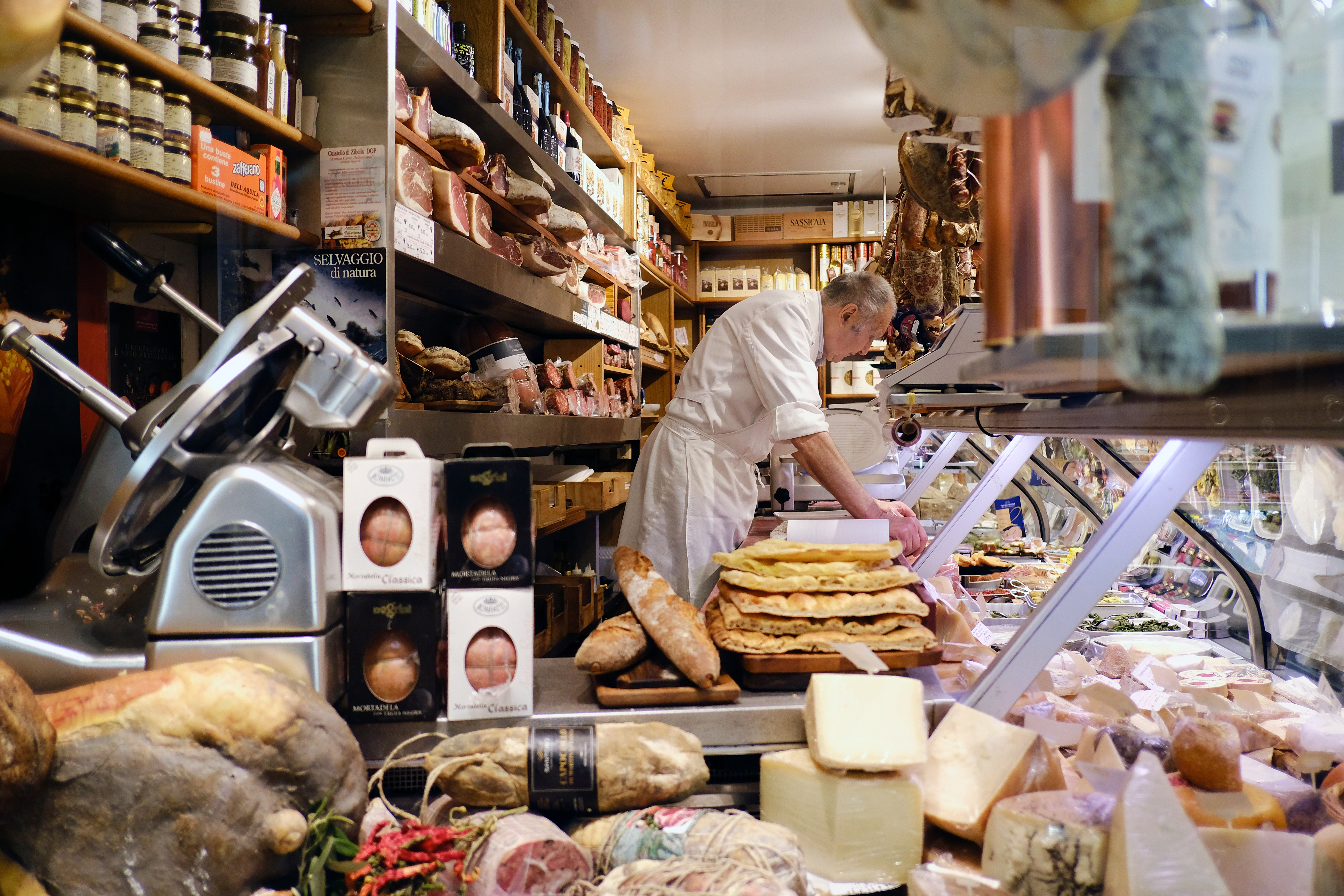
Bruno ensures he has stock across multiple categories at incremental prices, saying it’s a crucial part of his business planning, as he’s noticed many customers habits have changed in light of the cost-of-living crisis. “There has been a marked increase in our deli and ready-to-go meal ranges, suggesting that more people are choosing to entertain and host at home, rather than go out for a meal. Customers are choosing to prioritise the economy of picking up ingredients from a deli, having been helped by a knowledgeable member of staff, and being able to feed a family or multiple friends at home for the same price as a meal out.”
Offering variety in price is a strategy Antonio has adopted too. Despite being based in an affluent part of the UK, he says there does come a point where even the most well-at-heel customer will baulk at the cost of an ingredient. “These people still have mortgages to pay, and family to feed. They don’t mind paying a bit more for quality, but if you go too high, it will work against you,” he advises. Olive oil is a case in point. “Everybody wants a good olive oil, but £25 for a half litre does become a bit much. If you can get in oil that you can price for around the same cost as a decent bottle of wine, it will always sell.”
Antonio recommends, across your Italian range, having a mixture of prices that reflect your nearby demographic’s spending powers. “Don’t be a food snob! You need to have that £7.95 bottle of oil as a great everyday option. Then, if customers want something better at a higher price tag, you can talk them through what you have.”
Too many delis miss the mark by being ‘out there’ with their range of products, says Antonio, who insists that for success, you simply must get the basics spot-on. “It’s important, at the very least, to have everything a client needs to create an entire meal.” They can’t be any old products though. “If you have tomatoes, they’ve got to be amazing tomatoes. You need great buffalo mozzarella, nice bread, superb pasta and wine. Sometimes you go into delis and they’ve got lots of fancy jars, and you don’t know what to do with them. You have to try to provide solutions for all kinds of meals – especially very good sauces. Seggiano pesto is one of our bestsellers.”
With interest in charcuterie and grazing boards growing every year, Bruno says ensuring you have a diverse array of choices at the counter, and are ready and willing to inspire customers, is essential too.
“As the individual items can be pretty affordable, we have noticed people are being more experimental with their different choices of cheeses and meats. They love talking to our staff about the nuances and provenance of different ingredients, and this has been heightened by the number of supermarkets closing their deli counters and forcing customers into independent stores for that something special. We have noticed our weekend trade now generates double the turnover that it does Monday to Thursday as people host over the weekend.”
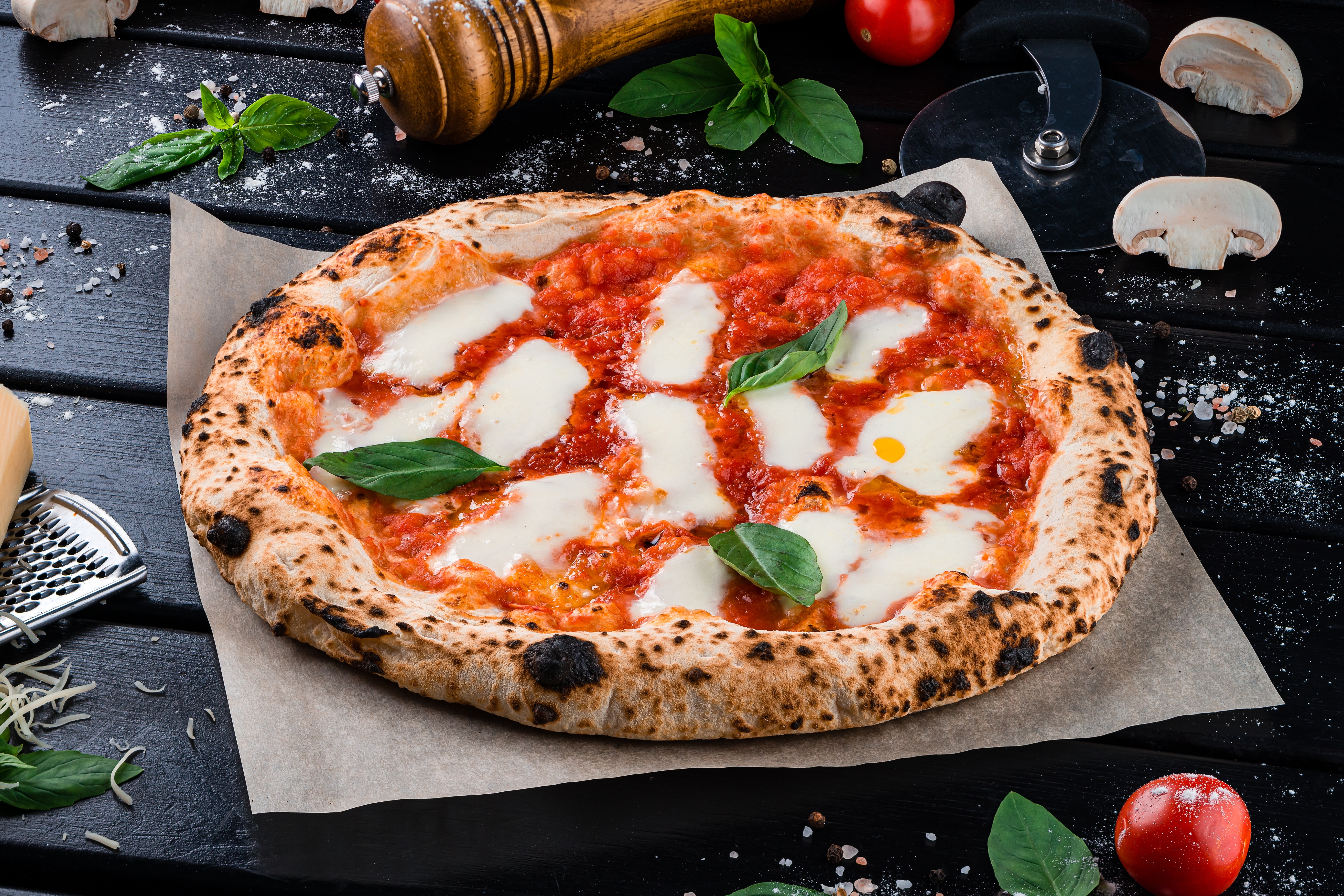
During lockdown many home pizza oven suppliers reportedly ran low or even ran out of stock, as people switched from dining out to entertaining their ‘bubble’ or family in their own gardens.
The desire to create fresh, homemade pizza in our kitchens continues, and Antonio says any Italian deli or independent retailer worth its salt should be catering for these customers. “The 00 flours, pepperoni, yeast, sauce, tomatoes, fior di latte, grated mozzarella – it’s very important to have all these things now,” he says. “I don’t think an Italian deli can survive without them. You just don’t want people to walk out and say ‘I couldn’t get what I needed there so I’m going to the supermarket’. You have to be fully stocked.”
In addition to pizza-making essentials, Antonio has seen a marked increase in recent years in the sale of burrata, stracciatella, nduja and guanciale, and sees these as key Italian products that everyone should be stocking right now. “We are selling tonnes of guanciale every week, and we’ve seen pancetta drop off a bit,” he says. “It has to be very very good guanciale though!”
Coming into the cooler months, Bruno anticipates a rise in sales of what he calls ‘stodge’ foods as people begin to crave richer meats and heavier pastas. He says he’s also seen a real rise in popularity of traditional ingredients with a twist. “For example, our Mamma Emma gnocchi filled with ricotta, beetroot, gorgonzola etc is proving hugely appealing. We are also seeing a demand for cotechino – a large pork sausage that we slow cook over several hours – and zampone is set to be popular over the New year as more people embrace Italian table traditions, hoping the combination of pig trotter and lentils will bring them the supposed good fortune.”
“The evolution of food, like language and other facets of human culture, is an endlessly fascinating journey,” says Seggiano founder Peri Eagleton, talking about the changing face of the cuisine, and its integration into British life. “Italy’s post-war years were marked by widespread poverty, prompting significant emigration. During this period Italians at home were not enjoying the dishes that Italy is famous for. In fact, food was scarce, and the contadini, or land labourers, survived on a simple diet of legumes and vegetables that they cultivated themselves. This diet, known as ‘cucina povera’, may well explain the longevity enjoyed by many contadini, who often lead active lives well into their 90s.”
In the 60s, spaghetti Bolognese became an iconic dish in London, and three decades later, as the cuisine became established in British culture, Peri and partner David embarked on a journey to establish and Italian food business, selling olive oil from their farm.
“At that time, there were few serious competitors at our level of quality, aside from Carluccio’s, before its transformation into a commercial restaurant chain,” Peri says. “It was during this time that we forged lasting friendships and partnerships with some of Italy’s most exceptional food producers.”
As Seggiano’s journey has progressed, Peri says they’ve begun to question what Italian tradition and authenticity really mean. “A recent phenomenon, known as ‘gastro nationalism’, has emerged in Italy. It denies the role played by Italian Americans in reinventing iconic dishes such as pizza, pasta, and carbonara sauce. Gastro nationalists assert that these culinary traditions belong to Italy alone. Giorgia Meloni’s government has even contemplated testing Italian restaurants for adherence to traditional recipes, potentially branding chefs as transgressors if they deviate from established culinary rules and exercise creativity.”
On the other hand, Peri says, quality controls do offer tangible guarantees to consumers – such as the stringent production regulations governing extra virgin olive oil, and the production and labelling of balsamic vinegar of Modena.
“These regulations level the playing field, enabling consumers to make like-for-like informed comparisons. Food labelling is all too often influenced by big brand lobbies to the detriment of consumers. The label statement ‘Made in Italy’ might lead one to assume a product boasts Italian quality. However, numerous pasta brands employ it to conceal the fact their pasta is made from less expensive imported Canadian wheat.”
Peri says retailers should be vigilant when stocking Italian products, ensuring they can establish exactly where the items they are buying are from, and how they were made – something Seggiano prides itself on.
Speaking on where Italian food is now, and where it’s going, she says there is a bit of a movement currently towards cucina povera - using sustainable, pre-industrial ancient grains and pulses. “We have also moved away from Italian tradition with a range of soups, two of which borrow from the Japanese and Asian palate of flavours, though they are made in Sicily with the customary flair of the producer. The third doubles up as an exceptional pasta fazool sauce, known by purists as pasta fagioli.”
Peri says demand is high for producers such as Seggiano, to deliver more in terms of flavour, using ‘clean’ ingredients, and enhancing nutritional value. “That means making foods that can fit in with plant-based diets, deliver good levels of fibre and protein, and include ingredients with anti-inflammatory, antioxidant properties. This isn’t weird science, it’s about simple, healthy ingredients, and nutritious food which doesn’t require a lot of preparation time. We apologise in advance to the gastro nationalists of Italy for our use of miso, ginger, turmeric and coconut.”
While experimenting is always good, particularly in exciting loyal brand lovers, Peri doesn’t see the core of Italian deli production changing, but instead predicts the steady and continued sale of pesto, pasta, pasta sauces, olives, and gluten-free products.
“Research tells us consumers are sticking with the mainstays of Italian cooking. They are paying more than they would for an industrial product because it tastes better, and they trust the brand.”
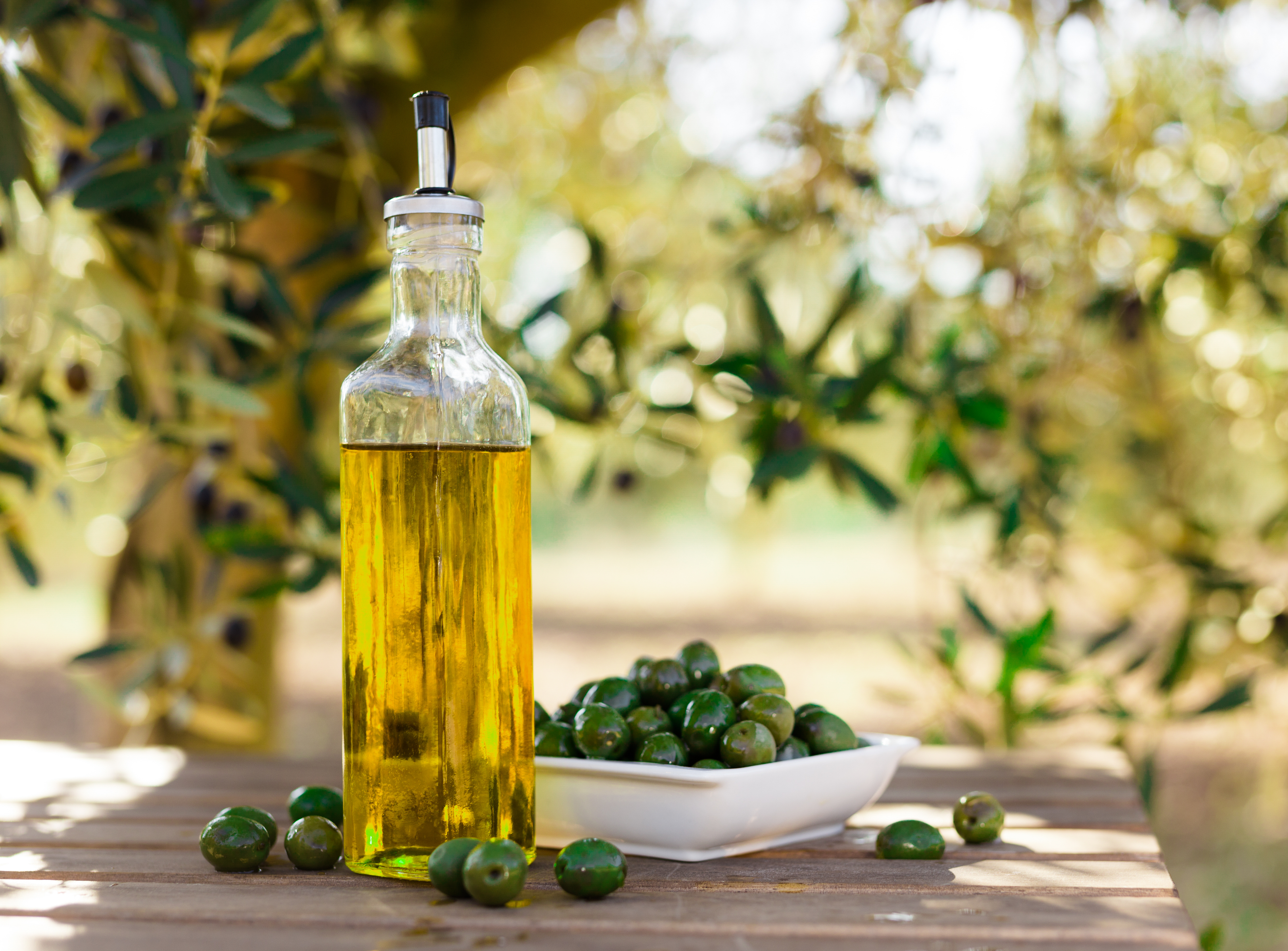
For Italians, olive oil is liquid gold – and natives take sourcing of their oil very seriously. In growing regions, it’s not uncommon for families to rock up to olive groves with giant containers, where they will restock on their favourite variety for the months to come.
Not all oils are created equal, though, says expert Yacine Amor of the Artisan Olive Oil Company, which specialises in sourcing oils from across Europe.
“Good olive oils are produced quite differently from standard oils,” Yacine says. “They tend to be produced fairly early in the season, and the difference can easily be seen in the chemical profile.” When sourcing olive oil, retailers can ask for a chemical test to expose the quality of the oils they are sampling. “Extra virgin olive oil should have an acidity of no more than 0.8. The best are less than around 0.3 or 0.4. The second way to discover the quality of your oil is to look at the year of harvest. We are right now in a very different market for olive oil because of the dry weather conditions, especially in Spain. If you look at the price of oil in supermarkets, a lot are priced below the current bulk price in Spain. That means these oils are not from a recent harvest and are probably mixed from old harvests. If I was a retailer trying to sell premium oil, I would want to know which harvest went into the bottles I am looking at.”
Sensory analysis is important in determining quality too. “Very good olive oils,” says Yacine, “have a distinct smell. A little bitterness and spiciness to different degrees. This varies from region to region and time of harvest, but it is the opposite of a neutral profile. It is very easy to test. Open a bottle, and if there’s no smell, you already know it’s not particularly high quality.”
The best Italian oils, Yacine adds, tend to come from Tuscany, Sicily and Puglia. “Puglia is the biggest producer in terms of quantity, Tuscany is super premium with a strong taste, and we sell a lot of Sicilian olive oil at the moment, which hits the right spot for UK consumers with its medium fruity flavours. That appeals to people who want an oil to use for cooking, dipping and finishing dishes.”
As ever, Yacine says you should have an open an honest conversation with your supplier, and make sure you try before you buy.
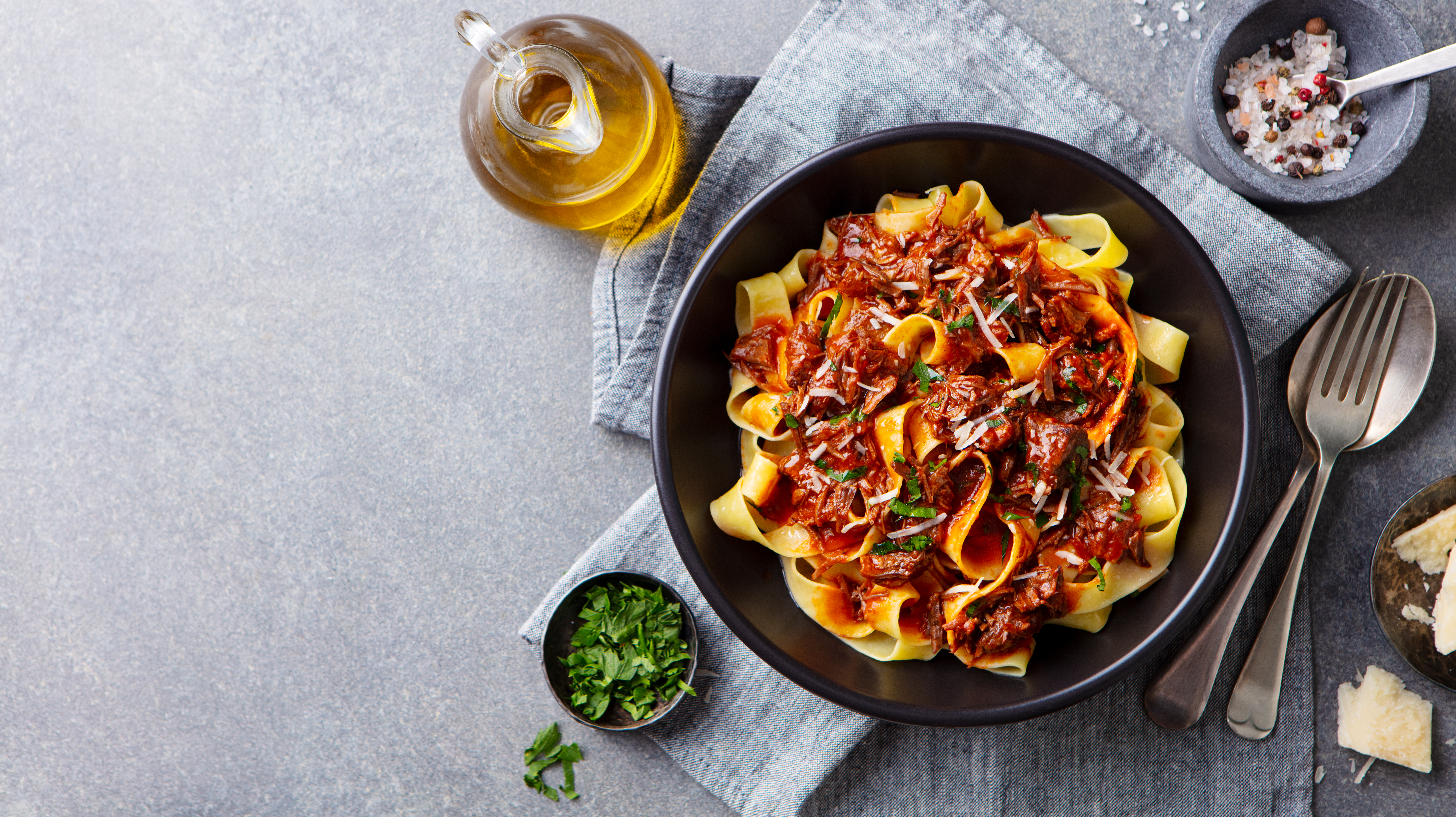
For Vittoria Veltri, a London-based chef who runs Pasta and Play, and Panzone (a mobile food business selling Southern Italian street food), having access to well-stocked Italian delis is vital for delivering the flavours and quality her customers expect.
Why is it so important for you to be able to access an Italian deli?
They are essential for the execution of many of my recipes, because either some products don’t exist at all here in the UK (like good quality bechamel sauce) or they don’t have the same quality. Most times I make my own bechamel, but sometimes I am in a rush, I need to make food quickly for my family, and I like to have one or two packages of ready sauce that I can use.
Tuna fillets in oil are a real delicacy in the South of Italy, where people make it at home to save the fish for periods of the year when there is a scarcity of tuna. I think the quality of tuna fillets in the UK is very low, and the taste is simply not the same. My favourite brand is the Callipo one, which is from my region, Calabria.
What makes a great Italian deli?
The first thing I look for is if they stock certain brands. If there are brands I know of and these brands are good ones, then I can find good things in this deli. Another very important thing I look for is price. There are delis in certain parts of London that sell food for the price of gold. Obviously, I am happy to pay slightly more for good quality, but sometimes these Italian shops go a bit overboard pricing products too highly.
Do you have any favourite products?
Nduja from Callipo. This is a staple for every Calabrian in the world. I love to add this to my pasta sauce to give it a spicy kick. When I want to feel healthier, I buy the vegan version from Belazu. It is called Ve-Du-Ya and it tastes almost like real nduja.
I use tonno fillets from Callipo or Rio Mare for so many things. Panna and bechamel from Chef (they are essential for most of my baked recipes). Tortellini Barilla or Divella for a quick lunch solution. Mozzarella Galbani (it’s perfect for pizza). Piadelle from Mulino Bianco or Crosta e Mollica are unmissable in my cupboard. And the balsamico from Giuseppe Giusti will take your salads to a Michelin-starred level.
What would you like to see more of?
I have never seen Sardella in any Italian deli. It’s a product that comes from Calabria. Sardella, also known as rosamarina or Calabrian caviar, is a sauce made with fish and hot pepper. It is a seafood variant of nduja. Many think that it is a reinterpretation of garum – a fish-based sauce used a lot by the ancient Romans.
Another thing that I have never seen in any shop here in London is burrino. Burrino (meaning ‘little butter’ in Italian, as the name suggests, is a cheese with butter inside. It is one of my favourite cheeses, and the first thing I eat when I am back.
Without a dash of seasoning, even the finest of dishes can fall flat. Around the world, the way we season our food varies. In Britain, a mere sprinkling of sea salt will lift the humblest of ingredients. Soy sauce trickled over Asian dishes brings a new dimension. Whereas in Italy, hard cheese is king.
The most commonly used and recognised ‘flavour bomb’ has to be Parmigiano Reggiano, which has become ubiquitous in British supermarkets. However, if your customers want to authentically recreate some of Italy’s most famous dishes, there’s another cheese you should be stocking in your counter – Pecorino Romano PDO. The umami, bold, savoury cheese is a must-have for producing a traditional carbonara, or cacio e pepe.
Pecorino Romano PDO is currently expanding rapidly from the country into foreign markets, and is certainly an ingredient to keep your eye on. “Its versatility makes it a unique ingredient for catering and innovative gastronomy,” says Riccardo Pastore, director general of Consorzio per la Tutela del Formaggio Pecorino Romano. “We are working on a project in the UK which aims to bolster knowledge and recognition, focussing on three primary objectives: increasing the reputation of quality, raising awareness about the cheese, and enhancing the knowledge and competitiveness of excellence.”
Pecorino Romano DOP, Riccardo adds, has well-defined characteristics that make it incredibly versatile. “It’s a hard, cooked cheese, crafted from fresh, whole sheep’s milk. Notably, it’s naturally lactose-free. Its defining feature is its aromatic flavour, mildly spicy when used as a table cheese, and intensely spicy when grated.”
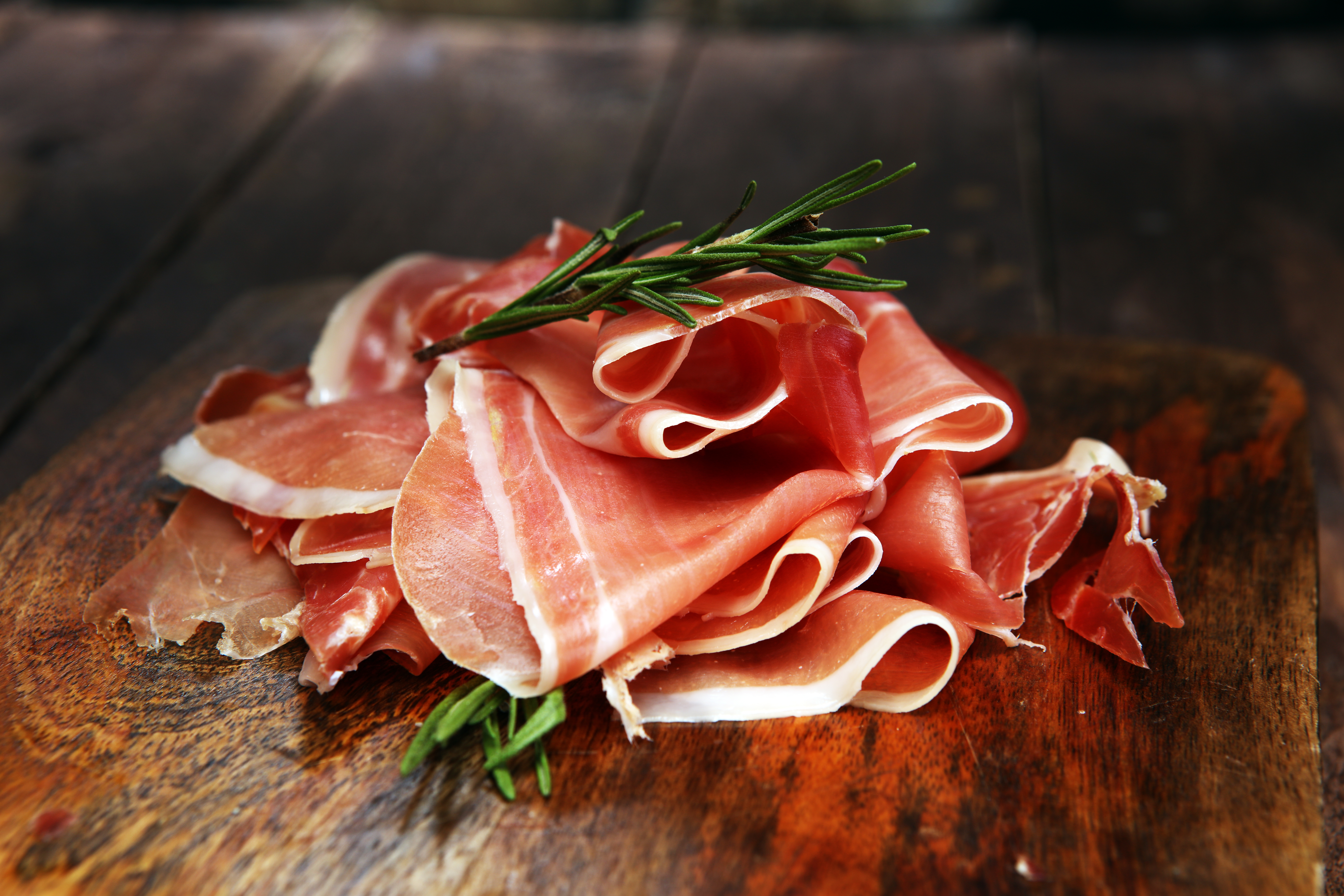
While the British charcuterie boom is in full swing and is absolutely to be celebrated, discerning retailers should still be helping customers put Italian salamis and whole cut cured meats on the table. These products have a rich heritage, and generations of experience behind them. They have been meticulously crafted, using time-honoured methods, resulting in exquisite flavours and textures. The only problem is, many consumers won’t know the nuanced differences between the broad range of cuts. Offering tastings, or (if you have a café offering) demonstrating their uniqueness via grazing boards, is incredibly important from an educational perspective. As is spending time with your wholesaler or supplier, to ensure you can weave in the story of each product at the point of sale.
Prosciutto di Parma: Made in Emilia-Romagna’s world-famous microclimate since Roman times, Prosciutto di Parma can only be produced with Italian born and bred pigs – usually the Large White, Landrace or Duroc. Sweet, salty and buttery soft, the ham is 100% natural, with no additives or preservatives. The real deal is stamped and branded with the Parma Crown.
Bresaola: Consumers are on the hunt for high protein, low fat products, and this muscle cut, from Lombardy, certainly fits the bill. Available in several types, from sottosso to magatello, it sees lean pieces of beef cured and aged for two to three months. The result is sweet, with an almost truffle muskiness.
Guanciale: Italian specialists and delis are reporting phenomenal sales of this herbal, salty pork jowl cut, which is an essential part of dishes such as carbonara and amatriciana. Unlike pancetta, which can prove a little gristly, guanciale has melting quality that makes it superior in every way for sauces.
Speck: Lightly pink at the centre, and darkening at the edges, this bold-flavoured cut from Northern Italy brings body, and a real punch of flavour to creamy sauces, and is delicious alongside crusty bread, cheese and a regional wine.
Culatello: Considered one of the very best Italian cuts – and increasingly being produced by charcutiers in the UK – culatello is made in the Po Valley with leaner pieces of pork, cured in salt, garlic, pepper and white wine. It’s not as robust as other varieties and needs careful monitoring to keep it in top condition, but the effort is worth it for this deliciously supple and delicate ham.
Finocchiona: Difficult to pronounce – so why not help your customers by spelling it out to them on a sign in the counter? This Tuscan salami is a deli favourite, speckled with fragrant fennel seeds and sometimes fennel flowers. It brings a pronounced flavour, and instant interest to any grazing board.
Nduja: Widely used by telly chefs and in restaurants, nduja is ‘having its day’ in the UK. The bright red soft salami, originally from Spilinga in Calabria, has a spicy, almost tangy taste, from an profusion of dried, roasted spicy red peppers. There are some decent varieties available in jars, but fresh nduja is infinitely better.
When I began Just Gourmet Foods in 2018, it was with a vision to bring authentic, artisanal Italian brands to the UK market. There were many ‘big brands’ in the UK, even in the speciality retail sector, and I recognised the challenges for the smaller, arguably more authentic, Italian brands to gain any traction. Witnessing a range of barriers - from language to lack of understanding around market expectations (as well as the more operational challenges around labelling, importation and distribution) - many brands were simply unable to fit the profile of what the UK market expected. Therefore, the business grew out of a space where we could help them to navigate these expectations and, ultimately, deliver a product fit for the UK consumer.
In the past five years I have focused on relationships with a selection of more than 20 producers who provide an authentic taste of Italy. By investing in warehousing and a small, knowledgeable team, we have acted as an ‘incubator’ for some truly exceptional products. I feel it is important to maintain the opportunities for delivering quality into the UK market and, having worked with food for my entire career, also see so much value in the independent sector in the face of the homogeneity of the big box retailers.
Our range encompasses everything from amaretti to zucca (squash) pasta sauce and many delights in between! This year I’ve noticed an increase in interest across all categories, including Christmas offerings, and we will continue to build on this in 2024. With customers now understanding the nuances of tomato varieties, the Italianavera range has gone from strength to strength as home cooks appreciate that a spunzillo offers qualities over the datterini. ‘Nduja, a spicy Calabrian sausage paste, has also seen a surge of interest over the past couple of years, and we are very proud of our version from Callipo, which packs a good punch on the flavour front. We have also seen growth in Italian biscuits. This signifies a move towards retailers offering their customers a more sophisticated alternative, as well as a growth in focus on gifting options, which the Marabissi range covers so well.
Another brand we have seen develop is BioOrto - a family business which grows all of its own produce organically. And Filotea offers retailers a range of eye-catching packaging and varieties. From Chilli Fettucine to hand formed Cannelloni, it covers shapes and flavours you won’t find elsewhere. While quality is paramount to us, how a product sits on shelf is equally important and we work with our brands to ensure that they stand out. This principle is clear in the wonderful selection of extra virgin olive oils we have sourced in reusable bottles, which look too good to hide in a cupboard! Be it bright ceramic bottles from Muraglia, the metallic finishes of the BioOrto range or the sophisticated simplicity of Tenute Cristiano, retailers will find a design that works for their profile.
Recent listings are the incredible range of sustainably caught and preserved fish from Armatore. The brand has a great story along, as does Gli Aironi, whose Smoked Carnaroli is getting a lot of attention at the moment, as the season changes. Let us not forget the exceptional balsamics from Borgo del Balsamico, which offer incredible quality for the price.